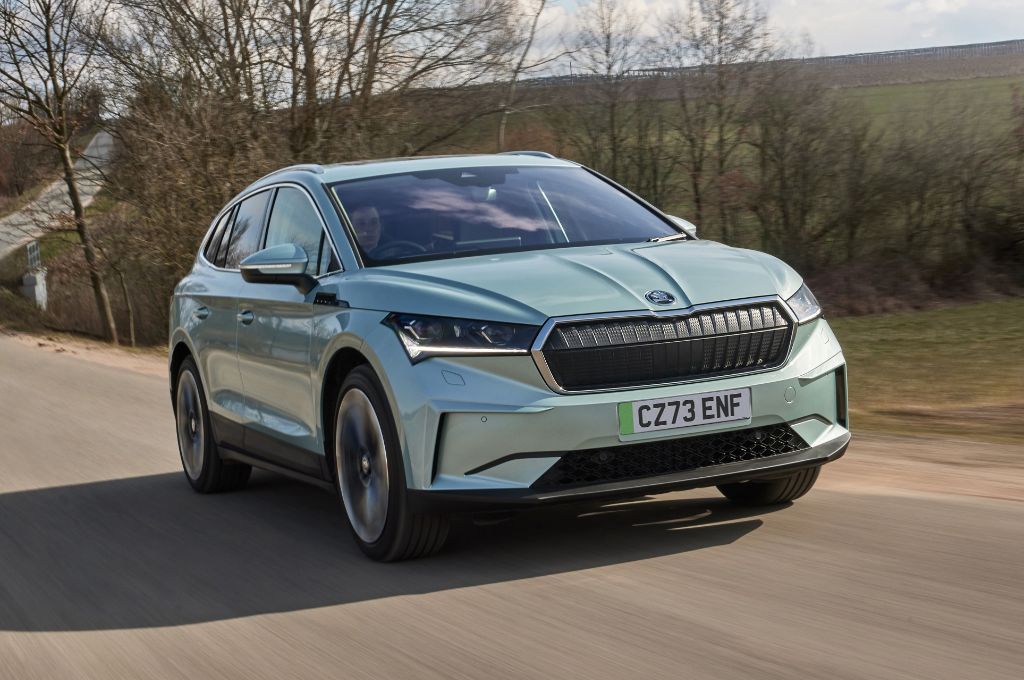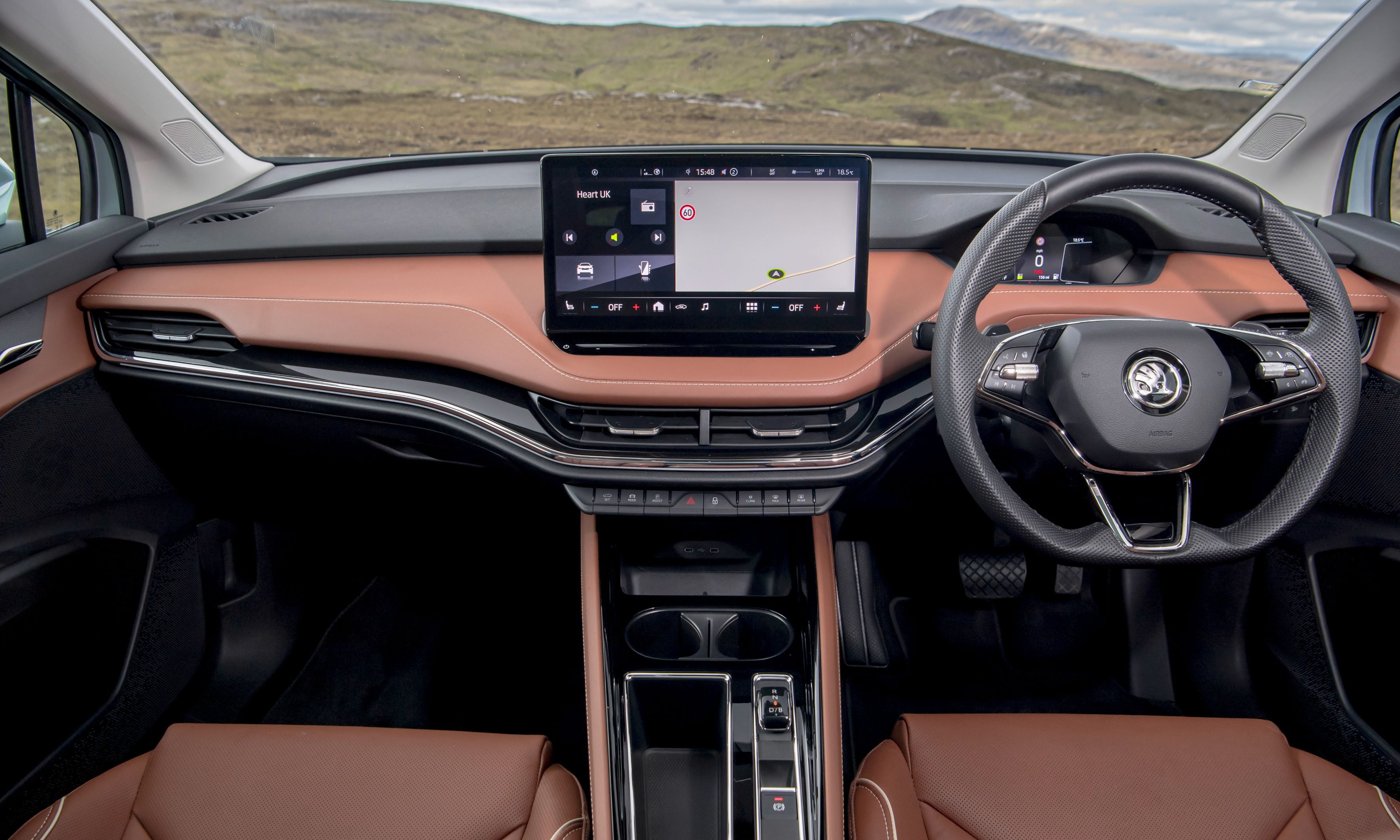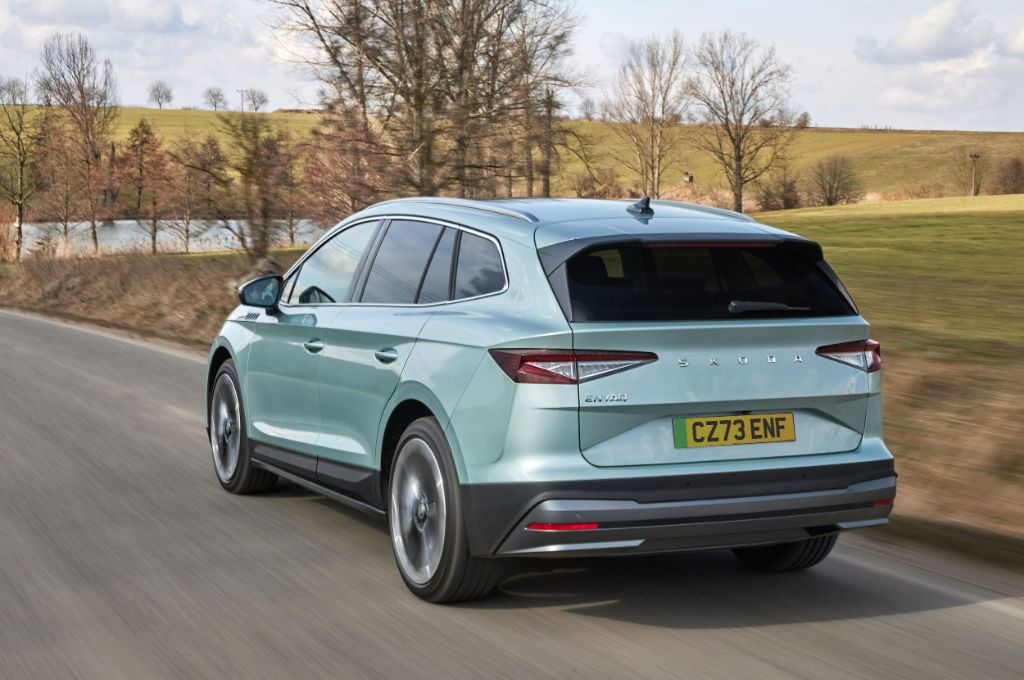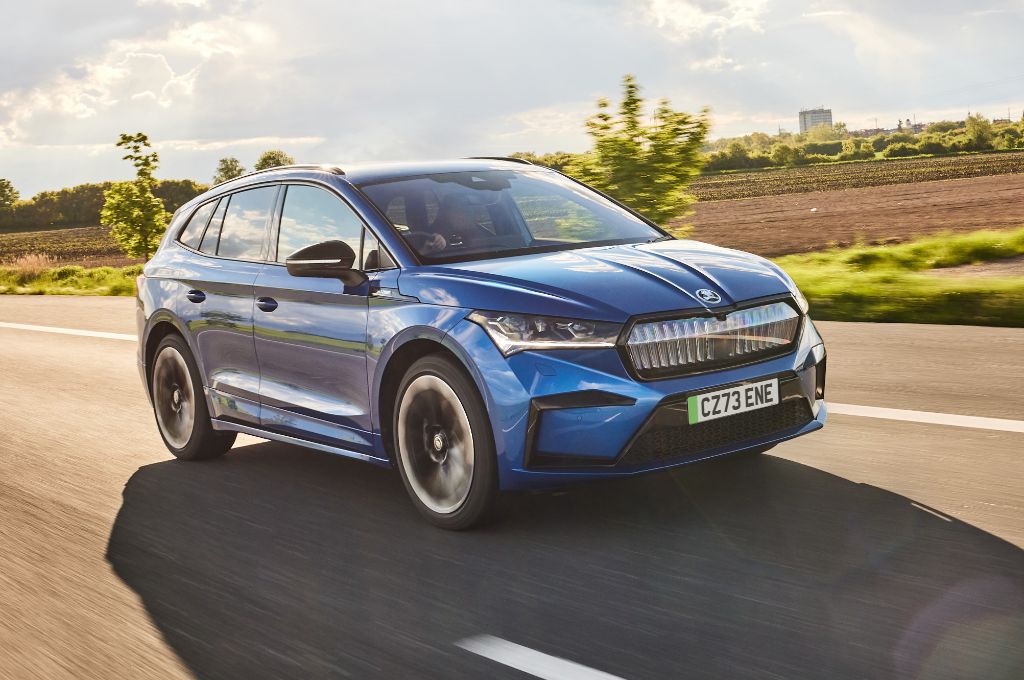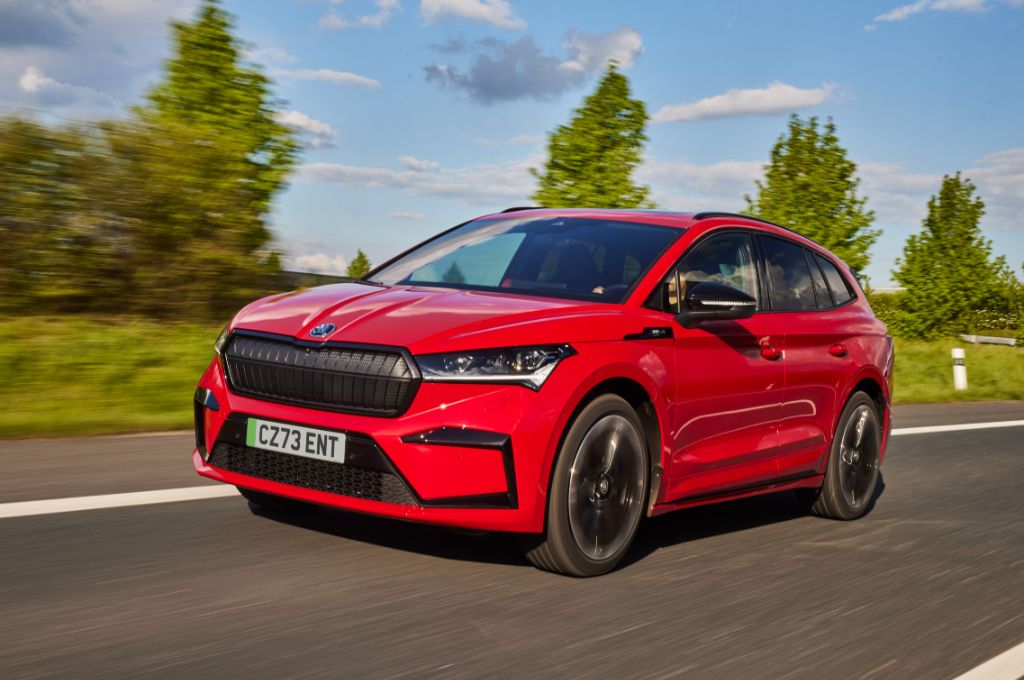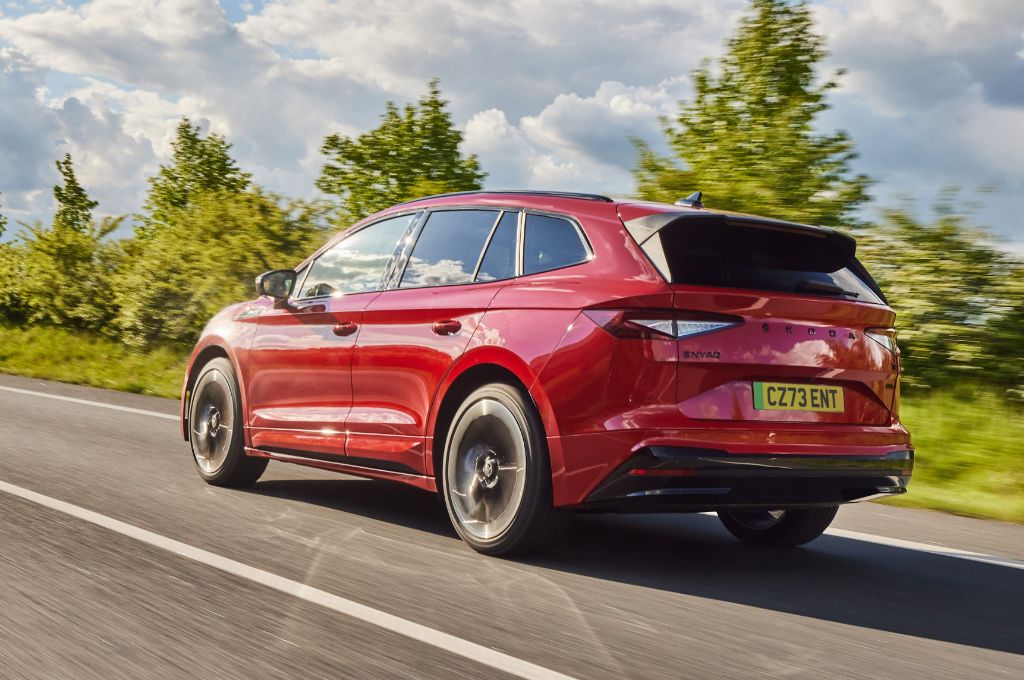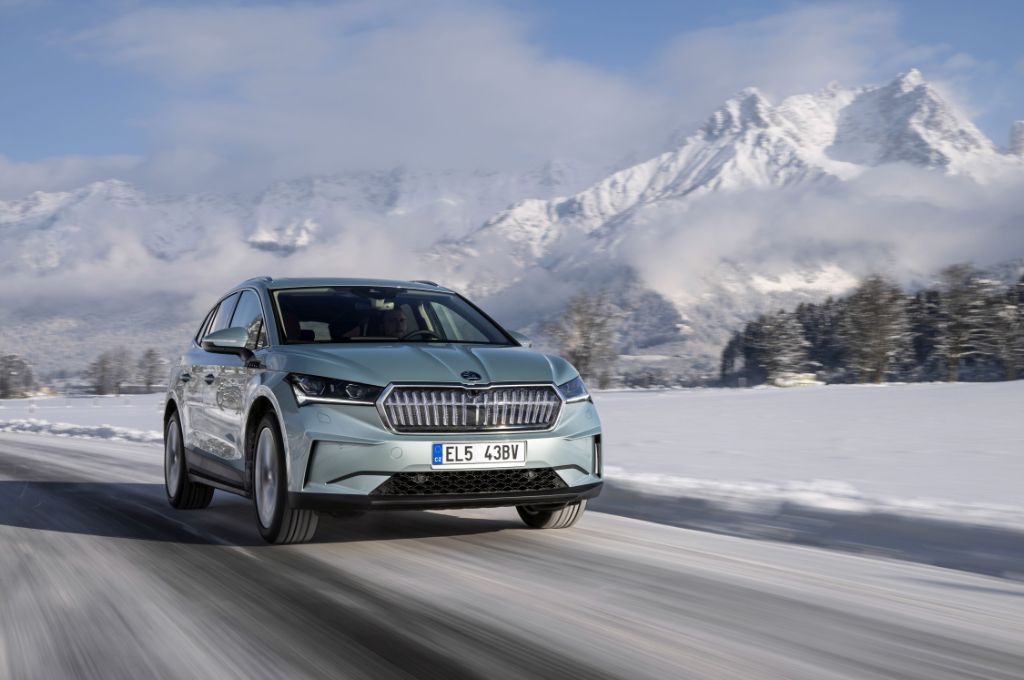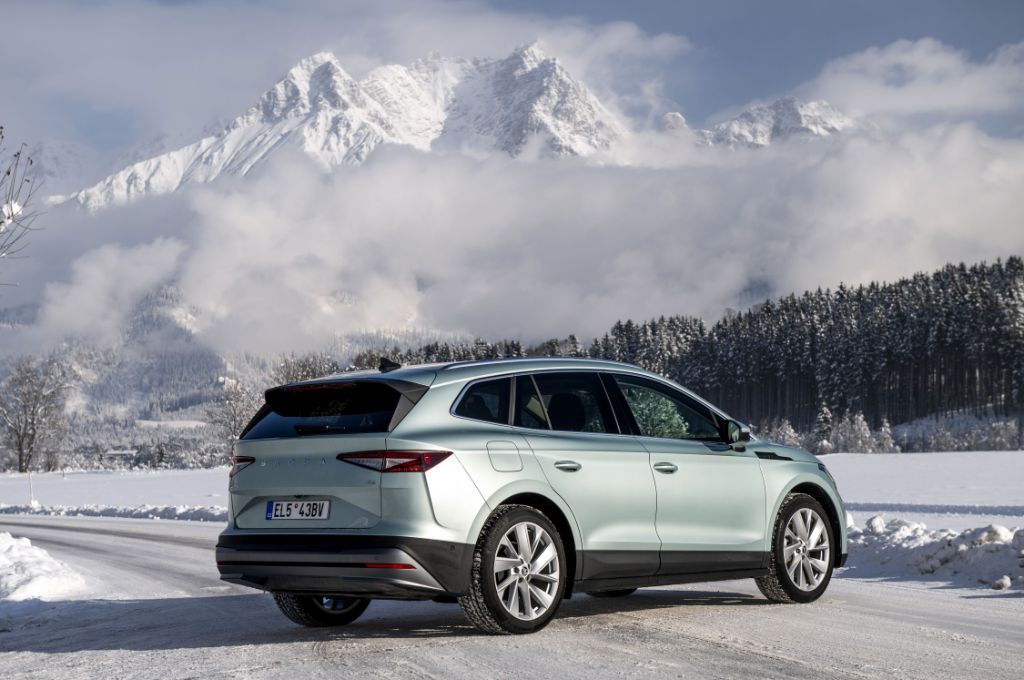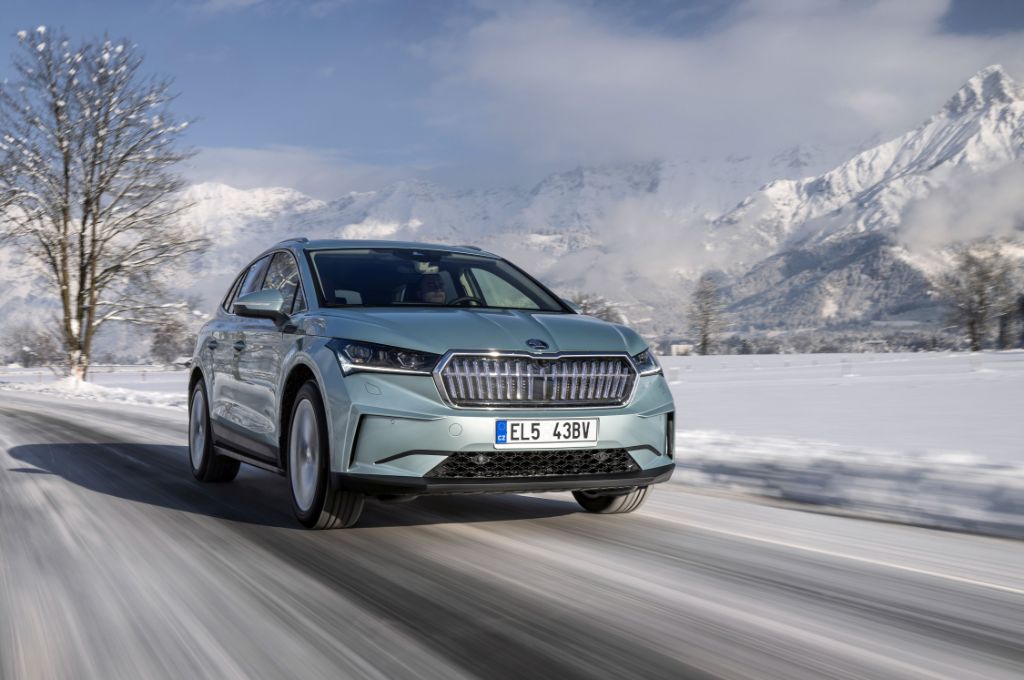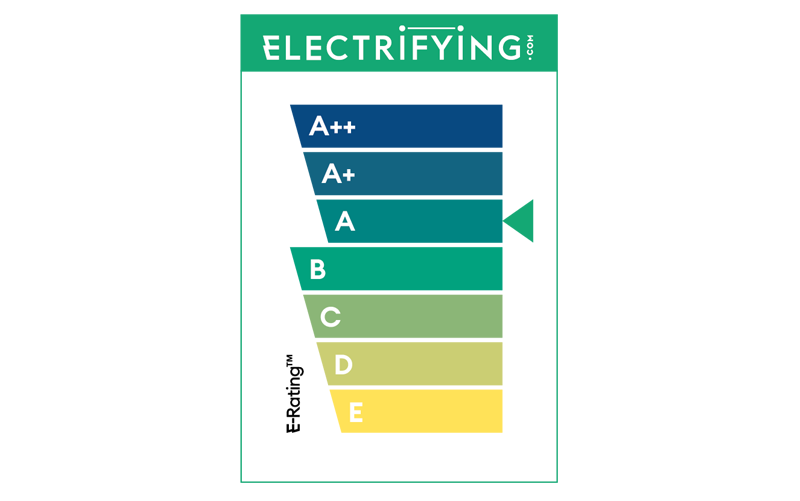Range
The smaller 52kWh pack has a WLTP range of 234 miles - or two less if you have the bigger wheels on the 'Edition' model, while the 77kWh comes with the promise of 348 miles on the WLTP cycle. The 52kWh models have a 167bhp motor that drives the rear wheels, plus a generous amount of pulling power - 310Nm - that makes it feel faster than those figures suggest. Models fitted with the 77kWh pack benefit from a new motor and inverter that sees both power and torque rise considerably. The 85 Edition model now delivers 282bhp (up from 201bhp) while torque has gone from 350Nm to an incredible 545Nm.
Interestingly (or not as the case may be) Skoda points out that the Enyaq marks the return to the classic rear-engine, rear-wheel drive layout that distinguished its less than fashionable Eastern bloc offerings of the 1970s and 80s. Thankfully, this is all it has in common with its pre-Volkswagen era predecessors.
Battery
The structure of the Enyaq’s battery is pretty clever. During development by Volkswagen it became known as the chocolate bar thanks to its layers that look a little like a KitKat. Unlike chocolate though, it helps keep the weight low and it’s more compact than other electric car batteries too. Skoda also claims that the structure and chemistry will mean it doesn’t degrade as quickly as other batteries. As a result, the brand guarantees it for eight years and say it should last the lifetime of the car. This isn’t necessarily true for other EVs, as the cells degrade over time and mileage.
Charging
When Škoda first launched the Enyaq in 2021, it took the strange decision to put rapid charging on the options list, limiting owners to 50kW unless they ponied up more than £440 to unlock higher speeds. Thankfully, the brand ditched the idea after a few months and now the Enyaq comes with decent charging speeds as standard.
As part of the 2024 update, all 77kWh models now come with 135kW rapid charging as standard (an increase of 10kW), with sportier models offering 175kW. Customers choosing the smaller battery model actually get 145kW, which is weird.
For the 77kW models, a 10-80% rapid charge will take less than 30 minutes, which is pretty par for the course when compared to rivals. The smaller 50 version takes around 25 minutes. What does mark the Enyaq apart from many of its competitors, though, is a new battery preconditioning function that has been added to the infotainment system. To achieve maximum charging speeds, electric car batteries need to be fully warmed up. Plug in to a rapid charger with a cold battery pack and you’ll never get anywhere near the maximum speed because the battery cells simply can’t store the energy quickly enough. Skoda’s solution is a neat one and allows the driver to manually start battery heating when they are approaching a rapid charger. There’s also a clear and intuitive screen that gives and indication of how fast the car will be able to charge according to the battery temperature.
Owners will be able charge their vehicles at home or at a workplace on an AC charge point. Using a Type 2 cable (supplied as standard), the Enyaq can charge at a maximum of 11kW when connected to a three-phase AC supply. Most domestic and workplace chargepoints are single-phase, so will charge the Enyaq iV at a maximum of 7.2kW. When connected to a 7.2kW supply, the 58kWh Enyaq can charge from empty to full in around 9hrs 30 minutes, while the Enyaq 80 with the larger 77kWh pack takes around 13 hours.













